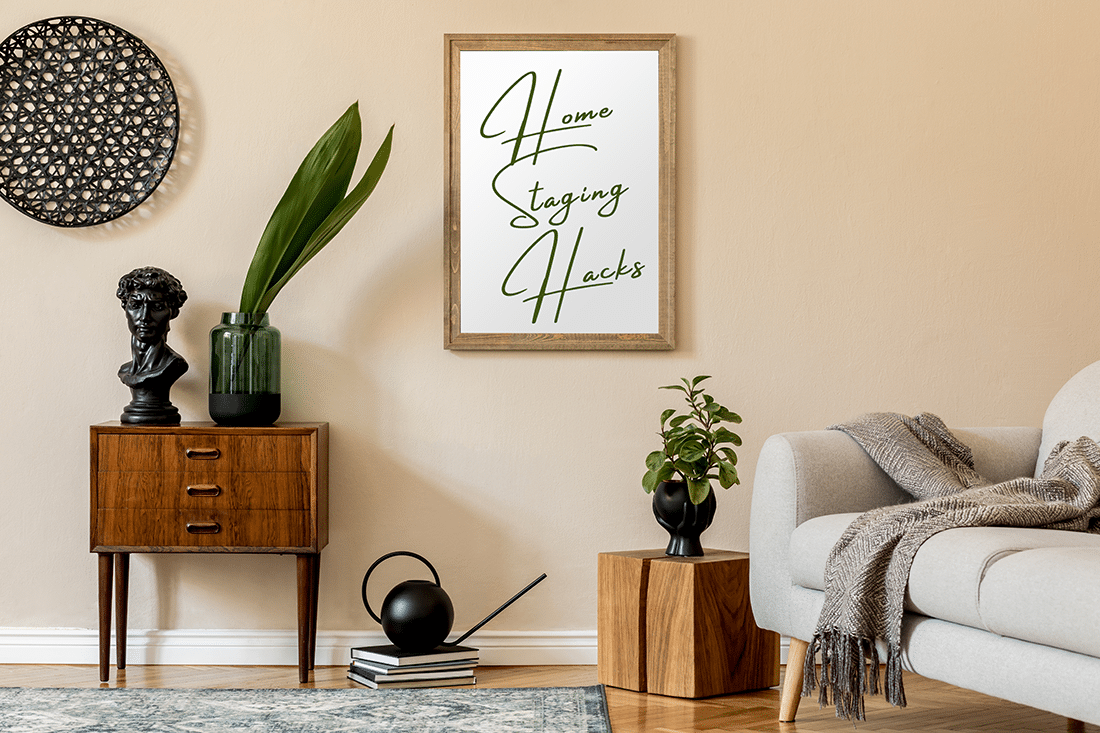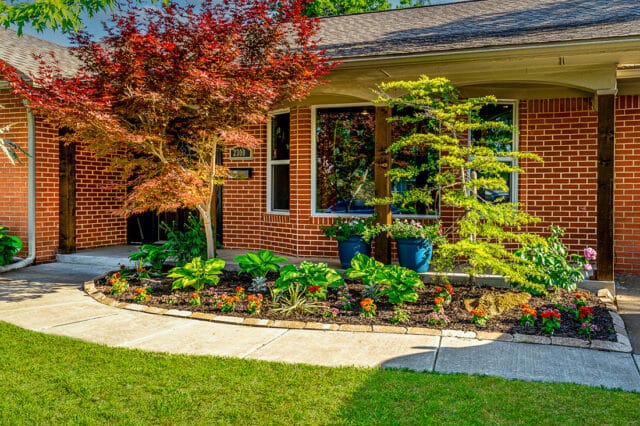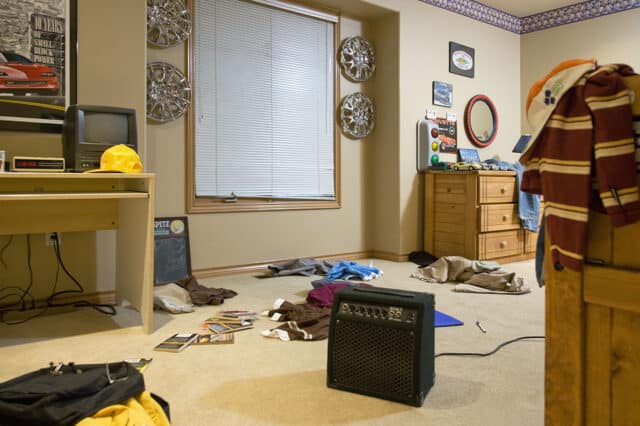
Unleash the Potential of Your Home with These DIY Home Staging Hacks
We’ve all been there. You’re preparing to sell your home, and you’re looking around at the space you’ve lived in and loved, wondering how to make it as appealing as possible to potential buyers. You’ve heard of professional home staging, but the costs seem daunting. What if there was a way to achieve similar results without breaking the bank? Well, you’re in luck. With these DIY home staging hacks, you can transform your home into a buyer’s dream. So, without further ado, here are the steps to take.
First Impressions Matter: Enhancing Your Home’s Exterior
Boosting Curb Appeal
The first impression potential buyers get of your home is from the outside. Therefore, ensuring your home’s exterior is as appealing as possible is crucial. Start by giving your front door a fresh coat of paint. This simple, affordable change can significantly enhance your home’s curb appeal. Choose a color that complements your home’s overall color scheme for a cohesive look.

Next, consider adding some well-placed plants. A few strategically placed potted plants can make your entrance more inviting. Opt for low-maintenance plants that can withstand varying weather conditions. Remember, the goal is to create a welcoming exterior that suggests the home is well-maintained.
Maintaining the Lawn and Garden
A well-maintained lawn and garden can significantly improve your home’s curb appeal. Regularly mow the lawn and remove any weeds. If you have a garden, ensure it’s well-tended. Trim any overgrown shrubs and remove dead plants. If you don’t have a green thumb, consider hiring a professional gardener to spruce up your outdoor space.
Refresh Your Floors: A Cost-Effective Alternative to Renovations
Cost-Effective Hacks
- Deep Clean Floors: A thorough cleaning of your floors can make a significant difference in their appearance. Vacuum or sweep, and then mop with a suitable cleaner for your flooring type to make them look fresh and well-maintained.
- Rent a Carpet Cleaner: Instead of hiring a professional service, rent a carpet cleaner from a local store to remove dirt, stains, and allergens from your carpets. This will improve their appearance and make them feel softer and fresher.
- Refresh Grout: If your tile floors have discolored grout, clean it thoroughly and apply a budget-friendly grout refresh product to make it look like new again.
- DIY Floor Polish: For laminate and vinyl floors, use an affordable floor polish designed for these materials to restore shine and protect against wear and tear.
Adding Rugs for a Cozy Feel
Another cost-effective way to refresh your floors is by adding rugs. Rugs can add warmth and coziness to a room, making it feel more inviting. They can also help define different areas in an open floor plan. Choose rugs that complement your home’s color scheme and style. Remember, the size of the rug matters. A rug that’s too small can make a room look disjointed, while a rug that’s too large can make the space look smaller.
Mirror Magic: Amplify Your Space
Creating Illusions with Mirrors
Mirrors are a fantastic tool in your DIY home staging arsenal. They can make your living room appear larger and brighter, creating an illusion of depth and space. A wall covered with mirrors can double the perceived size of the room. This trick is particularly useful in smaller homes or apartments where space is at a premium.
But don’t just stop in the living room. Mirrors can be used effectively in other rooms too. For instance, a well-placed mirror in a narrow hallway can make it seem wider. In the bedroom, a large mirror can add a touch of elegance while making the room appear more spacious.
Choosing the Right Mirrors
When selecting mirrors for staging, consider their shape and size. Large, rectangular mirrors are great for creating the illusion of space, while round mirrors can add a touch of softness to a room. The frame of the mirror also matters. Choose frames that complement the style and color scheme of your home.
Furniture Balance: Striking the Right Note
Avoiding Clutter

When staging your home, it’s important to strike a balance with your furniture. Having too much furniture in your living room can make it look cluttered and smaller than it actually is. On the other hand, a room with too little furniture can feel sparse and uninviting.
Start by removing any unnecessary pieces of furniture. Keep only those pieces that contribute to the overall aesthetic of the room. Remember, potential buyers should be able to move around freely in the room without bumping into furniture.
Arranging Furniture Effectively
The arrangement of furniture can significantly impact how spacious a room feels. Consider floating some pieces instead of pushing all your furniture against the walls. For instance, you could place your sofa in the middle of the room and then arrange chairs and side tables around it. This can create a cozy, conversational area and make the room feel more spacious.
Minimalist Kitchen: The Art of Less is More
Clearing Your Counters
When it comes to staging your kitchen, less is definitely more. A cluttered kitchen can make the space look smaller and less appealing to potential buyers. Therefore, keeping your kitchen counters clear of appliances and food items is important. This doesn’t mean your counters should be completely bare. A few well-placed items, like a bowl of fresh fruit or a vase of flowers, can add a touch of homeliness without creating clutter.
Organizing Your Cabinets
While potential buyers may not open every drawer and cabinet, ensuring these spaces are well-organized is a good idea. A neatly arranged cabinet suggests that there’s plenty of storage space in the kitchen, which is a big selling point for many buyers. Consider using drawer dividers or storage bins to organize your utensils and other kitchen items.
Define Each Space: Giving Every Room a Purpose
The Importance of Defining Spaces
Ensuring each room has a clear purpose is crucial when staging your home. This helps potential buyers visualize how they can use the space. If a room serves multiple functions, it can be confusing and off-putting. Therefore, choose one purpose for each room and stage it accordingly. For instance, if you’ve been using a spare bedroom as both a home office and a gym, decide which function is more appealing to potential buyers and stage the room for that purpose.
Staging Multi-Functional Spaces
In some cases, a room may need to serve multiple functions. For instance, the living room may also serve as the dining area in a small apartment. In such cases, it’s important to clearly define each area. You can do this by using rugs to demarcate different areas or by arranging the furniture to separate each function.
Lighting Matters: Illuminate Your Home’s Best Features
The Power of Natural Light
Natural light can make your home feel more spacious and welcoming. Therefore, maximizing the amount of natural light in your home is important. Open up your curtains and blinds to let in as much light as possible. If you have heavy, dark curtains, consider replacing them with lighter, sheer curtains that allow more light in.
Strategic Use of Artificial Light
While natural light is ideal, artificial light also plays a crucial role in home staging. Use a mix of overhead, table, and floor lamps to create a warm, inviting atmosphere. Remember, the goal is to make your home feel cozy and inviting, not stark and clinical. So, opt for warm, soft light bulbs rather than harsh, white ones.
Neutral Colors: The Safe and Appealing Choice
The Appeal of Neutrals
Staging your home is best to stick to a neutral color palette. Neutral colors like whites, grays, and beiges are universally appealing and can make your home feel more spacious and clean. They also provide a blank canvas for potential buyers, allowing them to envision their own furniture and decor in the space.
Adding Pops of Color
While a neutral color palette is key, that doesn’t mean your home should be devoid of color. Adding pops of color through accessories like throw pillows, rugs, and artwork can add personality and interest to a room. Just remember to keep it subtle. The color should enhance the room, not overwhelm it.
Don’t Forget the Bathroom: A Key Selling Point
Cleanliness is King
When it comes to bathrooms, cleanliness is paramount. Potential buyers will be turned off by a dirty bathroom, so make sure every surface is sparkling clean. This includes the toilet, sink, shower, and floors. Don’t forget about the grout. If it’s discolored, consider re-grouting to give your bathroom a fresh, clean look.
Updating Fixtures
Updating your bathroom fixtures is a cost-effective way to give your bathroom a modern, updated look. This could include the faucet, showerhead, and even the knobs on your cabinets. Choose fixtures that match the style of your bathroom for a cohesive look.
Adding Luxurious Touches
Finally, consider adding some luxurious touches to your bathroom. This could include fluffy white towels, a high-quality bath mat, and even a few well-chosen accessories like a stylish soap dispenser or a vase of fresh flowers. These small touches can make your bathroom feel like a spa, which is sure to impress potential buyers.
Final Thought: Transform Your Home with These DIY Home Staging Hacks
Selling your home can be daunting, but with these DIY home staging hacks, you can make your home more appealing to potential buyers. From enhancing your home’s exterior to refreshing your floors, from creating illusions with mirrors to striking the right balance with your furniture, from adopting a minimalist approach in your kitchen to defining each space, from illuminating your home’s best features with the right lighting to choosing neutral colors, and finally, not forgetting the bathroom – each step plays a crucial role in staging your home effectively.
So, roll up your sleeves and start transforming your home today. Remember, every effort you put in could potentially result in a higher selling price and a quicker sale. If you feel like you could use some assistance, please don’t hesitate to reach out to OKCHomeSelles at McGraw Realtors.
FAQs
How do I stage my home myself?
Staging your home yourself involves a number of steps. Start by decluttering your home and removing personal items. Next, clean every surface thoroughly. Consider updating fixtures and painting walls in neutral colors. Arrange furniture to make each room feel spacious and inviting. Use lighting effectively to highlight your home’s best features. Finally, add some luxurious touches to make your home feel like a showplace.
How to stage a house for sale DIY?
DIY home staging involves making your home as appealing as possible to potential buyers. This includes decluttering, cleaning, updating fixtures, painting, arranging furniture effectively, maximizing natural light, and adding luxurious touches. Remember, the goal is to help buyers visualize themselves living in your home.
How do I prepare my house for staging?
Preparing your house for staging involves deep cleaning, decluttering, and depersonalizing your space. You may need to make minor repairs or updates, such as painting walls in neutral colors or updating fixtures. Once your home is clean and clutter-free, you can begin arranging furniture and adding decor to highlight your home’s best features.
How do I stage my home like a pro?
Staging your home like a pro involves careful planning and attention to detail. Start by decluttering and cleaning your home. Then, consider the flow of each room and arrange the furniture accordingly. Use lighting to highlight your home’s best features, and choose a neutral color palette with pops of color to make your home feel warm and inviting. Don’t forget to stage each room with a clear purpose in mind.
Luxury Specialist at McGraw Realtors
With a diverse background, including a career as an Air Force fighter pilot and entrepreneurship, Bill transitioned to real estate in 1995. Co-founding Paradigm Realty with his wife, Charlene, he quickly rose to prominence in Oklahoma City’s luxury real estate scene. Now, as one of the top agents with annual sales surpassing $20 million, Bill’s dedication to exceptional service remains unparalleled. With a legacy spanning over two decades in the industry, Bill’s expertise and commitment make him a trusted name in luxury real estate.